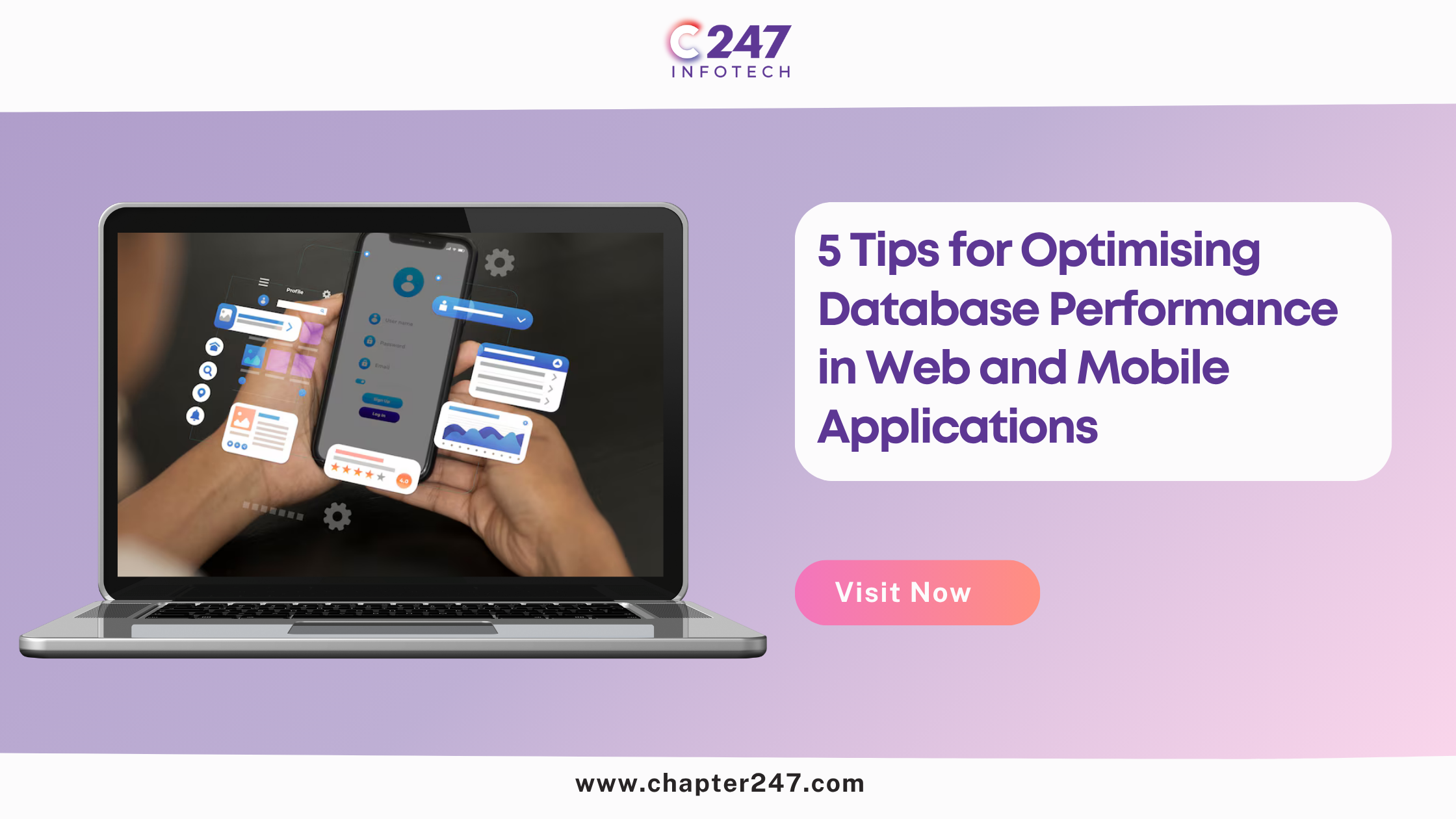A well-optimised database that ensures quick access to information, minimises downtime, and supports scalability is essential for maintaining seamless operations and staying competitive in your industry. Building a strong, scalable foundation that can support the demands of growing businesses is another objective of database optimization and performance tuning, in addition to improving query times.
Additionally, numerous variables affect how well web apps work. There are a lot of methods and strategies to improve the speed of your website. Both the client-side and server-side of your web application require the use of certain strategies. To improve your website, let’s talk about some of the main methods or actions.
Networks for Caching and Content Delivery
The load time of a website is increased when it is hosted on a single server. Every user must submit queries to the same server, and processing each request takes time. The page takes longer to load when there is a high volume of traffic on the website. Additionally, because the information must travel a greater distance, load times increase when the user is far from the server. Using a CDN is the way to address this problem.
In essence, a content delivery network (CDN) is a geographically dispersed collection of servers where you may send all the resources required to load content from the Internet, such as HTML pages, JavaScript files, stylesheets, pictures, and videos. CDN speeds up your application, lessens the strain on your website, and caches all these files on servers near your visitors.
Reduce the Number of HTTP Requests
The pages on your website will load more slowly if they make a lot of HTTP requests. Yahoo claims that downloading the various components of a website, such as graphics, stylesheets, and scripts, takes up 80% of the load time. More HTTP requests are needed, and the page takes a long time to render when a visitor wants to access these features on your website.
Use Chrome DevTools’ Network tab to count HTTP requests. Reduce them by bundling assets, minifying code, avoiding unnecessary libraries, using CSS sprites, and optimising images and scripts.
Cut Down on Redirects
You may use redirects to move and remove pages or fix broken links, but these redirects increase HTTP requests and degrade performance. Pages are slowed down, and the website’s performance is destroyed by redirects (301, 302). Using tools like Screaming Frog, you should first find all of the redirects on your website and then determine which ones are unnecessary. Keep the key redirects and remove the ones that aren’t needed.
Optimize Images
Images are key to user engagement, especially in e-commerce. 66% of consumers prefer products with three or more photos. However, large images slow down your site. Compress images using tools like TinyPNG, JPEGmini, Compressor.io, or Optimus with an API. Use responsive HTML image attributes to adjust size based on the screen.
Choose JPGs for photos, PNGs for logos or icons, and GIFs for animations. Match image dimensions to display size—don’t upload large images for small spaces. Make sure the image is sized appropriately if the maximum width is 300 pixels. Crop correctly and use browser resizing with fixed width and auto height for best performance.
Enable Compression
Google claims that uncompressed web information wastes 99 years of human life every day on the internet. Compression results in your website being quicker and requiring fewer resources from the server. Out of all compression methods, GZIP is considered the most effective and is used the most. It is an effective tool when working in HTML, CSS, and JavaScript. GZIP goes through the file and replaces similar parts with shorthand versions.
The browser then decompresses the files so they can be seen. You have the option to turn on GZIP on your Apache or Nginx server. If your site is built with WordPress, use WP-Rocket or W3 Total Cache plugins. Use online GZIP tests to see if your site is using GZIP compression. Where possible, compress all your files to help your website load faster and offer a better user experience.
Conclusion
Businesses may achieve speedier, more dependable systems that grow with ease by resolving common performance bottlenecks, putting helpful advice into practice, and adopting cutting-edge tactics like index-only scans and caching.

Optimising your database with Chapter247 is a crucial step in creating a competitive edge, regardless of your role: technical decision-maker, marketing specialist, or business owner. Allow Multishoring to assist you in turning your database into a potent tool that propels your company ahead.






